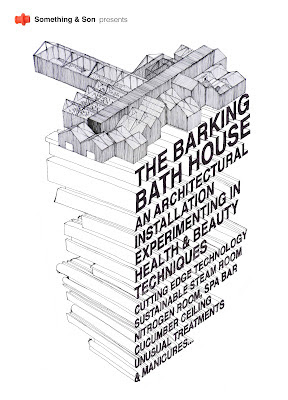Bet you didn't expect to find an experimental bespoke designed temporary spa and bar in Barking. And it's a bargain.
The sauna
According to the website:
'Barking Bathhouse is a new experimental social space where we want to encourage people to drop in and enjoy our spa space for just £8 and only £2 for local Barking residents. This gives you access to our traditional wood sauna, ice room, and relaxation rooms.'
The bar
Barking Bathhouse has been produced by Something & Son, a young London-based design practice. The Bathhouse also has a programme of events featuring music, comedy, yoga, artists tours and cabaret.
The project is supported by CREATE, which 'supports, produces and presents creative projects that foster social engagement and new artistic experiences in east London. CREATE delivers an annual summer programme of activity whilst working year-round to ensure that arts and culture are embedded into the long-term legacy and regeneration plans for east London. We bring art out of traditional spaces and into east London's parks, playgrounds, rooftops and tucked-away places. CREATE invites people to explore the city every summer and to jump feet-first into the extraordinary projects and performances they encounter. We commission and produce work by emerging local artists and established international figures, and bring our young residents behind the scenes with a programme of workshops, skills development and job placements.'
Barking Bathhouse is open Thurs - Sun until 16th September. It is funded by the Mayor's Outer London Fund and is being delivered for Barking and Dagenham Council. You can find Barking Bathhouse at: Axe Street, Barking, Essex IG11 7LX
To find out more visit: www.barkingbathhouse.com






































